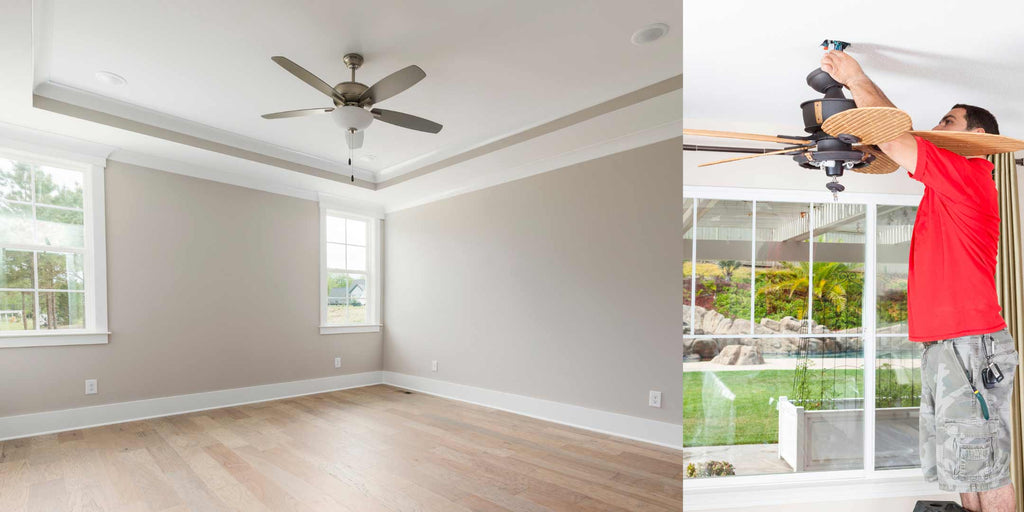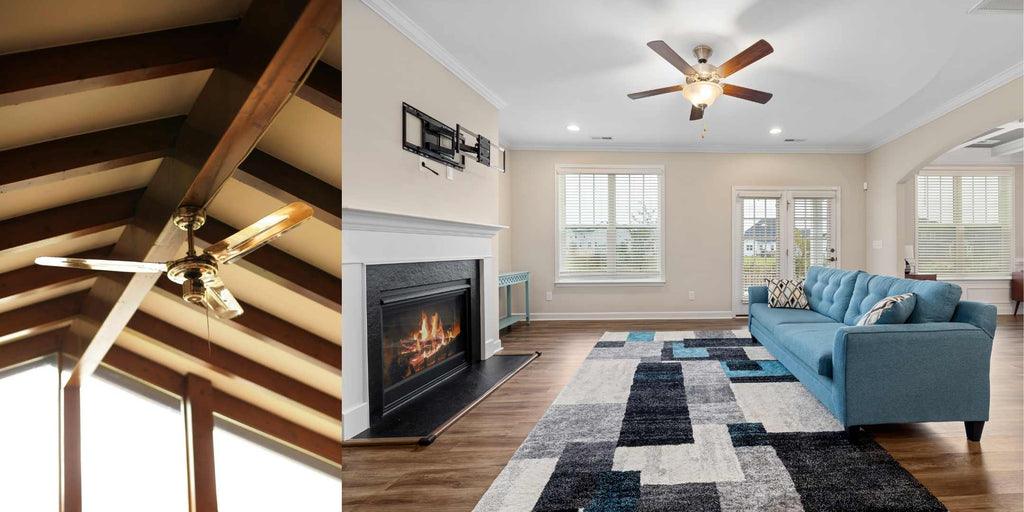Ceiling fans are amazing and reliable appliances that add so much functionality to your space. Not only do they promote a comfortable temperature, but many ceiling fan models also feature a built-in light and can add to the decor of the space. This stylish home appliance can also significantly shift the ambiance of your room. They can even chase mosquitoes away with their hardworking components.
Despite the numerous benefits that ceiling fans provide to Singapore homes, many homeowners are still hesitant to welcome one into their spaces. With the ceiling fan’s design, it is no wonder why many people, especially parents, find it daunting to have one at home. However, we can’t also deny the fact that ceiling fans have already come a long way in terms of their overall functionality and safety. With proper installation and maintenance, you can already enjoy your perfectly safe ceiling fan at home.
Here are some safety tips to boost your confidence when using your ceiling fan.
How to Keep Your Ceiling Fan Safe
Make Sure that Your Ceiling Fan is Professionally Installed

Some of the ceiling fan-related injuries from the past were caused by poor installation. The best way to prevent this is to have your ceiling fan installed by a professional. Many ceiling fan retailers in Singapore offer installation services to make sure that everything is correctly put into place, including the wiring. This is to prevent a wobbly ceiling fan and some potential wiring issues. Professional installation will also ensure that your ceiling fan’s warranty remains valid.
Ensure a Proper Distance from the Floor

The distance of your ceiling fan from the floor also has a huge impact on its safety. To guarantee maximum efficiency and safety, make sure that your ceiling fan is installed no less than seven feet from the floor. When buying a ceiling fan, it’s always good to know the distance of your ceiling from the floor and walls. Rooms with higher ceilings will generally require downrod ceiling fans, while low-profile ceiling fans are good for rooms with ceilings that are lower than eight feet. When it comes to wall distance, the ceiling fan must be at least 18 inches away from your wall to prevent it from hitting the surface. Professional ceiling fan installers will know where to place the ceiling fan to maximise its efficiency and safety.
Do Not Use Inappropriate Parts for Your Ceiling Fan

When cleaning, repairing, or changing your lightbulb, use materials and equipment that are safe for your appliance. Additionally, use a lightbulb with the recommended wattage to avoid potential risks and damage to your fan motor. Opt for LED bulbs with a lower wattage to prevent ceiling fan overheating and fire hazards.
Keep Your Ceiling Fan Clean

Damages to ceiling fans are usually caused by dirt buildup and a lack of maintenance. Maintain a safe condition for your ceiling fan and extend its lifespan by cleaning both its exterior and interior components on a regular basis. Regular checking, repairs, and maintenance are also appropriate to guarantee that your ceiling will work at its best.
Keep Fan Chains Away from Children

If you have bunk beds or taller surfaces that your children can climb on, avoid hanging your ceiling fan or installing one with a chain that can spark their curiosity. Even if you have deeper furniture pieces at home, make sure that your fan chain is not long enough for them to reach. The best way to prevent your little ones from being tempted to play on your ceiling fan chains is to choose a fan with a remote control or a smart ceiling fan that you can access through your phone.
Avoid Obstructions

Aside from the distance of your ceiling fan from the floor and walls, it’s also important to take note of your tall furniture pieces before deciding on your location. When positioning your ceiling fan, make sure that there is no nearby object that can obstruct its rotation and airflow. If you have some tall furniture pieces in your room, you may want to look for a more appropriate ceiling fan size that fits your space.
Ultimately, smaller rooms will require smaller ceiling fans, while bigger spaces benefit from bigger ceiling fans. Does this mean that small rooms can’t have a big electric ceiling fan? The truth is, when you choose a bigger ceiling fan for a smaller space, you might not only encounter some obstructions but also get excessive air circulation as well.
The best ceiling fans in Singapore are offered in various styles and sizes. Thus, you have more options to find what’s suitable for your room size.
Ceiling Fan Safety FAQs
Can a Ceiling Fan Overheat?

Thankfully, ceiling fans are designed for long term use. So if you buy a ceiling fan from a reputable brand in Singapore, you don’t have to worry about overheating due to regular usage. However, it’s important to always check the condition of your ceiling fan components to prevent possible overheating, especially if you have an older unit.
How Often Should I Clean My Ceiling Fan?

Your ceiling fan is susceptible to accumulating dust and dirt that can affect its safety and efficiency. These dust and dirt particles don’t only affect the appliance’s operations but can also trigger allergy and asthma symptoms. To prevent dust from building up on your ceiling fan, we recommend dusting it down at least once a week. You may also deep-clean your ceiling fan at least once a year.
Are Ceiling Fans Safe to Use?

The answer is yes. The keys to ensuring that your ceiling fan is safe for everyone are its initial quality, the integrity of its installation, and regular maintenance. There are many ways a ceiling fan is beneficial for any home in Singapore. This includes its comfortable operation, energy efficiency, and stylish design, which can elevate the look of your space. So, if you plan to welcome a ceiling fan to your home, make sure to do it right by buying a ceiling fan that fits your needs and having it professionally installed.








